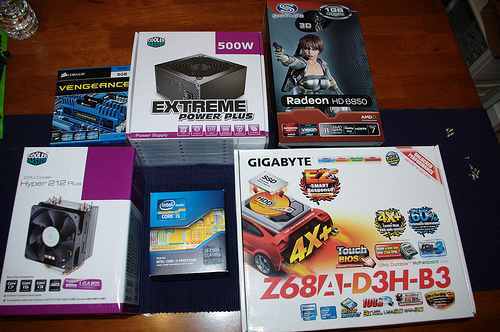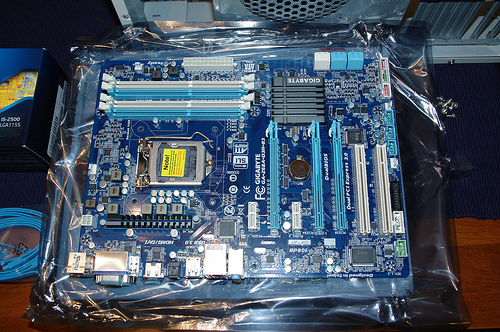My Computing Journey – Part 1 – Commodore 64
I often offhand mention the idea of “I’ve used computers my whole life” but I am not sure I’ve ever really gone into a lot of detail on what exactly that means. (I probably have but my memory is pretty shit these days). I’ve decided it might be fun to do a sort of, reminiscing series on the various “key computer points” in my life. Maybe that’s not quite the right way to put it, but basically, the eras’ surrounding specific computers in my life and what I remember about my time using them.
I’m considering doing something similar for consoles and gaming, but if I do, it’ll be over on Lameazoid,.com.
The start of this series though would have to be the Commodore 64. I actually am not real sure if the Commodore classifies as a computer or a console, I certainly used it more for games, but it has a keyboard so I’m going with Computer. My memory on exact time frames is a little shady, but I remember using the Commodore both at the 3rd house I lived in and at my aunt and uncles, so I would have been somewhere around the age of 4-5 at the start of using it. There was some overlap as well with the second computer I’ll cover next week, the Franklin PC-8000. At some point my parents got rid of the Commodore after it was stored away in an attic for a while, and I kind of wish I had kept it.
Like I mentioned, I used this computer for playing games more than anything. I don’t really remember playing a lot of Atari, a friend had one and my out of state grandparents had one, but our first console was the NES, so my first gaming exposure was one of the #PCMasterRace -ish.
Looking for some images to go along with this post, it seems like several of these games were on cassette tapes. I actually have no memory of using Cassette games at all, though it’s possible I did. I believe most of what I had played was on 5.25″ diskettes, or in a few cases, cartridges. Loading the system would bring up this blue screen. I remember you had to do this set of commands to run games, something like “Load *.* ,8,1” then I think it was just “run” or maybe “run *”. I imagine there was more that could be done at that blue and light blue colored command prompt screen but I never really ventured much beyond that.
A few games I remember from the Commodore, though a couple I am not sure I actually enjoyed, and I am sure there are others I DON’T remember.
Park Patrol
I remember this game, most of all, and I would consider it to be my favorite game on the Commodore. I can still hum the music today, 40 some years later. You play as a park ranger, rescuing people who are drowning in the river. The top half of the screen is the shore, the bottom half of the screen is the river.
The map loops, maybe it’s actually a lake.
Whatever the case, you had to avoid snakes and turtles and you had a little raft you had to use to rescue people in the water. This was also my first experience stomping turtles, not Mario, at least I think you would defeat the turtles by jumping on them. I do remember when you died, you would shrivel up into your hat, which kind of resembled the turtles, so we’d joke that you got turned into a turtle.
Ghostbusters
I have a love hate for this game. Ghostbusters at the time was super cool. So hey, cool, a Ghostbusters game! But my friends and I could never figure out what to do in this game. You would select a car, and some supplies and drive around collecting ghosts and the Stay Puft Marshmallow man would crush buildings and then you’d lose the game. Later (like, much later), i think I looked into it and you were supposed to collect the key and lock and take them to the center building to defeat Gozer.
It had some fun elements, but it also was frustrating and tedious.
Kids on Keys, Wizard of ID
I think I still have Kids on Keys in a tote somewhere. I don’t actually remember much about that game other than it was typing practice. Which is why I’m looping it in with Wizard of ID, which was also a typing game. I suspect this was the true reason we HAD the Commodore in the first place, because my mom would play these typing games, to get proficient for work.
I was bad at Wizard of ID, though I didn’t have a need to type a lot back then, and I didn’t quite get the point I think. I do know the big smoke monster was kind of creepy and it would slowly become more and more enraged unless you fed it letters (by typing), until it flamed you and you died.
BC’s Quest for Tires
One last sort of, honorable mention. This was one my uncle had so I only played it occasionally, but I do remember it. I almost looped it in with the typing games because I could swear it was a typing game and the faster you typed, the faster the little dude would go. It seems that was not the case, or maybe it had a typing mode that wasn’t the main game.
It’s essentially just an Endless Runner game. You have to jump and duck to avoid obstacles as you speed along the map. I don’t remember if the map was actually “endless”.
The other main thing I remember about this game is that it is based on a newspaper comic strip. Which seemed really weird, even then. I mean, I knew games could be “based on things”, there was a Ghostbusters game. But the newspaper comic strip part seemed odd.
Josh Miller aka “Ramen Junkie”. I write about my various hobbies here. Mostly coding, photography, and music. Sometimes I just write about life in general. I also post sometimes about toy collecting and video games at Lameazoid.com.












